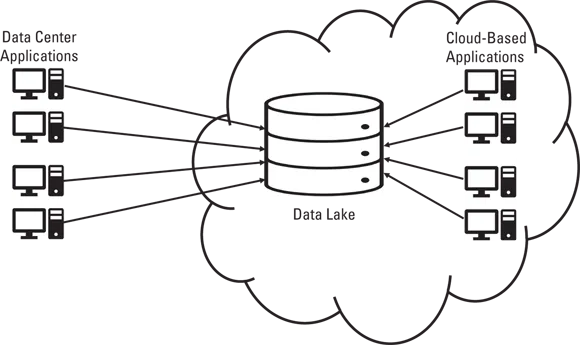
Data Lakes For Dummies
Alan R. Simon
- English
- ePUB (adapté aux mobiles)
- Disponible sur iOS et Android
Data Lakes For Dummies
Alan R. Simon
À propos de ce livre
Take a dive into data lakes
"Data lakes" is the latest buzz word in the world of data storage, management, and analysis. Data LakesForDummies decodesand demystifies the conceptand helps youget a straightforwardanswer the question: "Whatexactlyis a datalakeand do I need one for my business?" Written for an audience oftechnology decision makers tasked with keeping up with the latest and greatest data options, this bookprovides the perfectintroductory surveyofthese noveland growingfeatures of the information landscape.Itexplainshow they can helpyourbusiness, what they can (and can't) achieve, andwhat you need to do tocreatethelakethat best suitsyourparticular needs.
With a minimum of jargon, prolific tech author andbusiness intelligenceconsultant Alan Simonexplainshowdata lakes differ fromotherdatastorageparadigms. Once you've got the background picture, he maps out ways you can add a data lake to yourbusiness systems;migrate existing informationand switchon the fresh data supply;clean up the product;and open channels to thebestintelligence software forto interpretingwhat you'vestored.
- Understand and build data lake architecture
- Store, clean, and synchronizenew and existing data
- Comparethe bestdata lake vendors
- Structure raw data and produce usable analytics
Whatever your business, data lakes are going to form evermore prominentparts of theinformationuniverseevery business should have access to.Diveintothis booktostartexploring thedeepcompetitive advantagethey make possible—andmakesure your businessisn'tleft standing on the shore.
Foire aux questions
Informations
Getting Started with Data Lakes
- Separate the data lake reality from the hype.
- Steer your data lake efforts in the right direction.
- Diagnose and avoid common pitfalls that can dry up your data lake.
Jumping into the Data Lake




What Is a Data Lake?
- How big, dimension-wise (how long and how wide)
- How deep that “big hole in the ground” goes
- How much variability there is from one lake to another in terms of those length, width, and depth dimensions (the Great Lakes, anyone?)
- How much water you’ll find in the lake and how much that amount of water may vary among different lakes
- Whether a lake contains freshwater or saltwater
- A pond is also a big hole in the ground that’s filled with water, so is a lake the same as a pond?
- What distinguishes a lake from an ocean or a sea?
- Can a lake be physically connected to another lake?
- Can the dividing line between two states or two countries be in the middle of a lake?
- If a lake is empty, is it still considered a lake?
- If one lake leaves Chicago, heading east and travels at 100 miles per hour, and another lake heads west from New York … oh wait, wrong kind of word problem, never mind… .
A solidly architected, logically centralized, highly scalable environment filled with different types of analytic data that are sourced from both inside and outside your enterprise with varying latency, and which will be the primary go-to destination for your organization’s data-driven insights
Rock-solid water
- Enforces standards and best practices for data ingestion, data storage, data transmission, and interchange among its components and data delivery to end users
- Minimizes workarounds and temporary interfaces that have a tendency to stick around longer than planned and weaken your overall environment
- Continues to meet your predetermined metrics and thresholds for overall technical performance, such as data loading and interchange, as well as user response time
A really great lake

Expanding the data lake

Table des matières
- Cover
- Title Page
- Table of Contents
- Introduction
- Part 1: Getting Started with Data Lakes
- Part 2: Building the Docks, Avoiding the Rocks
- Part 3: Evaporating the Data Lake into the Cloud
- Part 4: Cleaning Up the Polluted Data Lake
- Part 5: Making Trips to the Data Lake a Tradition
- Part 6: The Part of Tens
- Index
- About the Author
- Connect with Dummies
- End User License Agreement


